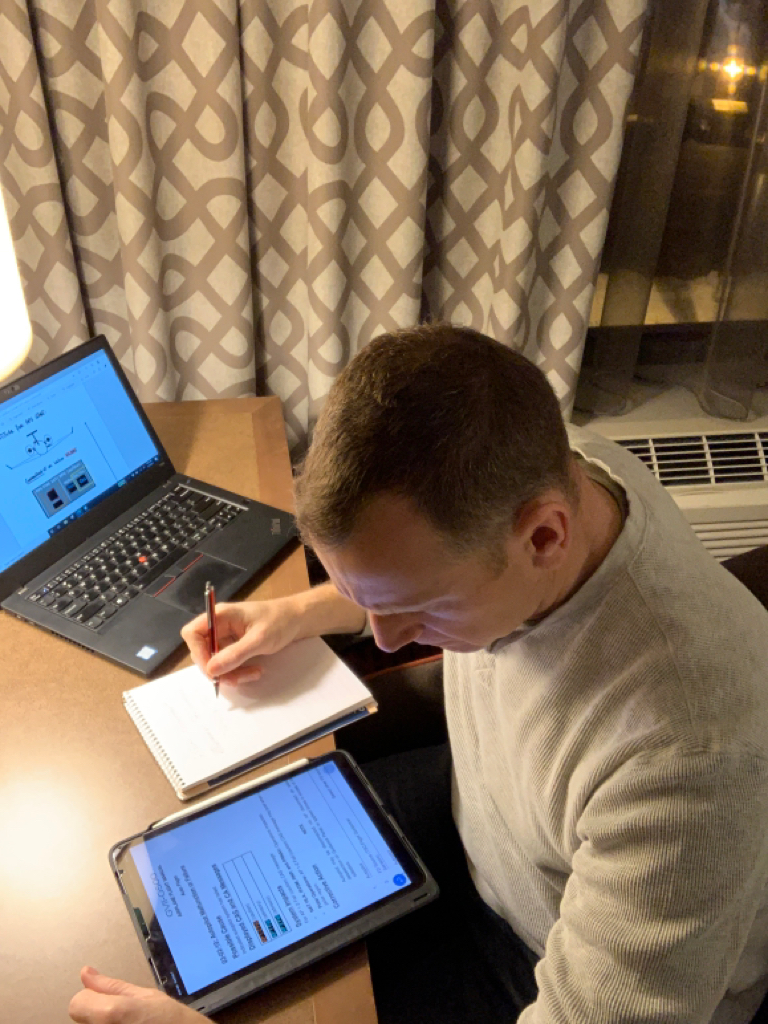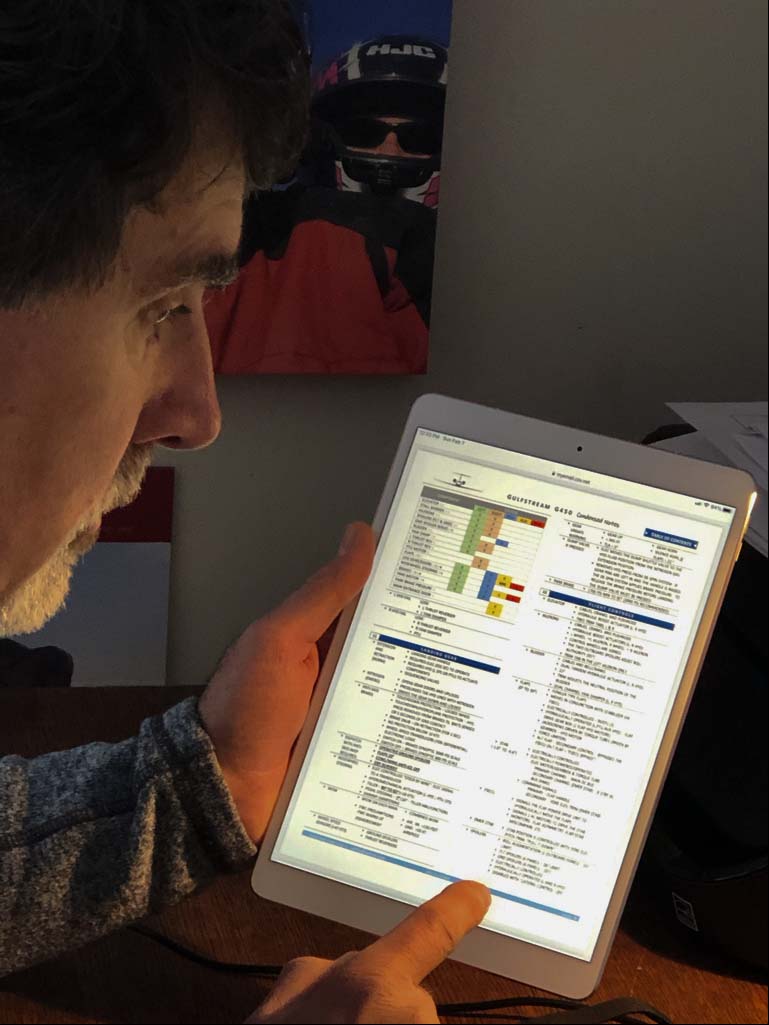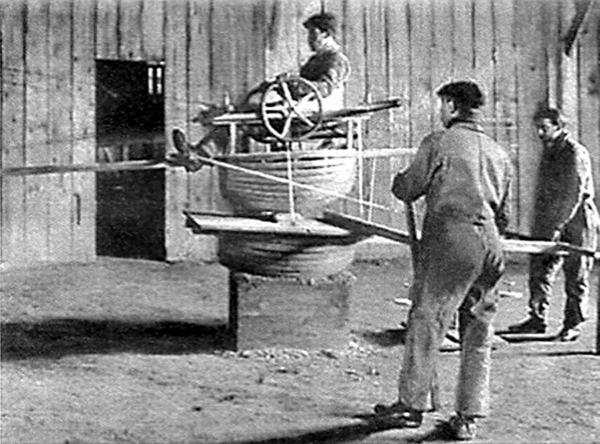The first few times you go to simulator recurrent it must seem novel and a challenge just to keep up. There is so much to learn and keeping up with the “seasoned” pros can seem an impossible task. But after a while you become the seasoned pro and forget what all the fuss was about. And after that? You can be tempted to show up with no preparation at all and the worst thing that can happen at that point is that you get away with it. You are coasting on previous preparation and nobody realizes that you are attending “cold,” just “winging it.” I’ve been there. At best, you are cheating yourself of the full learning experience. At worst, you may fail to learn a lifesaving lesson. At the very least, you will cause your peers to wonder about you: “I thought you were good.”
— James Albright

Updated:
2021-03-01
The solution to all of this is to ritualize the month prior to recurrent. If you get into the habit of specific self-study goals starting 30 days prior to the start of the recurrent, you will show up better prepared, you will do better in class, you will shine in the simulator, and you will walk away having maximized the training opportunity. Besides, your performance will make you look good. After several decades of doing this, not doing this, and remembering to do this again, I’ve settled on a seven-step program to prepare for recurrent.
1 — Step 1: Starting the day after your last recurrent: stay in the books!
3 — Step 3: Starting four weeks prior: study one aircraft system each day for two weeks
4 — Step 4: Starting three weeks prior: review one procedure each day for two weeks
5 — Step 5: Starting one week prior: pick a theme to review each day
6 — Step 6: The day before class: review simulator prep materials

1
Starting the day after your last recurrent: stay in the books!
Step One
It is hard to stay motivated, especially after you’ve spent a week in the training environment. In my flight department we used to have one pilot teach a class to the rest of us, every month, with the instructor role rotating among pilots. With four pilots, we ended up as teacher one month, student the next three. In 2020’s reduced flying schedule, we’ve upped that to once a week. There is no better way to keep motivated than knowing you will have to face your peers as the instructor. My motivation is to keep everyone plugged into operations, even when the reduced schedule makes that harder. Now everyone in our flight department is well-versed at hosting virtual online meetings and putting together slide presentations. Our discussions about various aircraft systems or international procedures have made us better pilots.
2
Starting one month prior to recurrent: (re)learn aircraft limitations every day until recurrent
Step Two
As our modern aircraft have become computerized, many of our memorization tasks have gone away, but not all! In the old days, training vendors would hand you a stack of flashcards on the first day of class. Nowadays, they send you a link to virtual flash cards for your iPad or smart phone. You can also make your own and there are a number of applications that will help you do the same thing for your computer, iPad, or phone. I like to make my own audio flashcards by recording a session of me asking the question, pausing three seconds, and then giving the answer. I then have something ready to quiz me on my next long drive with nothing else to listen to. I try to do this at least once every day starting one month prior to the start of recurrent. The next step is just a few days later, but this gets your mind into the “zone” for what is to come.
Want a copy of the GVII-G500 Limitations Audio Flashcards? Here you go: G500 Limitations.
3
Starting four weeks prior: study one aircraft system each day for two weeks
Step Three
Now it is time to get serious with aircraft systems. I like to assign myself a fixed time, usually the first thing after breakfast, to study one aircraft system in detail. I think the order in which you organize the systems should be thought through for maximum benefit. In my Gulfstream GVII-G500, there are a few things that need to be covered before the fly-by-wire system, so I do that first. The first seven items are quite “meaty” so I give them an hour. The next seven items are lighter weight topics, and that week will have overlap with Step Four, so they get half an hour. I try to limit myself to an hour a day, otherwise the task become onerous and easy to rationalize away. The following order is mine; you will have to think through what works best for your airplane and for you:
- Electrical system
- Fuel system
- Hydraulic system
- Flight control system
- Fire protection system
- Powerplant system
- APU system
- Landing gear and brakes system
- Pneumatic system
- Air conditioning system
- Pressurization system
- Ice and rain protection system
- Oxygen system
- Water and waste system
Those are the “what” I study but not the “how” I study. I find it very helpful to have very good notes to study – my own or those of a trusted expert – and I can use those to whet my appetite for further study in the Airplane Flight Manual or other primary source materials. If you are flying a Gulfstream G450, G500, G550, G600, or G650, you should have heard of Captain Ivan Luciani, author and artist of some brilliant study guides. They are available at our sister site: https://www.code450.com.
4
Starting three weeks prior: review one procedure each day for two weeks
Step Four
One of the many benefits of a full motion simulator is the chance to experience what we hope will never happen in the aircraft. The list of abnormal and emergency procedures in my current jet numbers well over a hundred. I have to remind myself to prioritize the things that can cause us or the aircraft harm, as well as having a look at a few more obscure problems. I find it helpful to have a list and check off each procedure I’ve completed. This can be as simple as a pencil annotation on a paper manual or a printed list of your own making. I’ll start out with a few simpler items, since the first week will overlap with my systems study. Then the last week will be the big ones: engine failures and fires during takeoff, engine relights, engine-out go arounds and landings, partial and no-flap landings, windshear, unusual attitudes, and cabin depressurizations.
5
Starting one week prior: pick a theme to review each day
Step Five
A typical recurrent may include just three simulator flights in which to cram in a lot of training. Some courses will structure these into themes, such as “High, Hot, and Heavy Day.” I find it helpful to spend the last week prior to recurrent trying to anticipate how each day will go and study the procedures for each possible theme. With seven days, I can more than double my chances of guessing what the theme for each day will be. My latest guesses:
- Stalls, Unusual attitude recovery
- High, Hot, and Heavy takeoff operations
- Cold weather operations
- Low visibility taxi, takeoff, landing
- Fires, engine and cabin
- Windshear and Controlled Flight Into Terrain avoidance
- Performance (takeoff, landing, weight and balance)
Before, when examining systems or procedures, it was helpful to have detailed notes and source material available. When looking at broader topics, I find it helpful to have handy reference guides that cover everything I need, easily found, in one place. If you can find a good online users’ group, you may have just the source. If you are flying a Gulfstream G450 or G550, Captain Steven Foltz has both a short and a long guide just for you. They are available at our sister site: https://www.code450.com.
6
The day before class: review simulator prep materials
Step Six
I used to take the day off the day before recurrent begins but I was caught short once or twice when my classmates were better prepared than me. It seemed FlightSafety International introduced a new set of flashcards that I didn’t know about, and in those cards were new and important limitations to our fleet of aircraft. So now I take the day before to skim through everything the simulator vendor has provided. Depending on the completeness of your notes, you may want to do this earlier in this process.
7
The day after recurrent: "After action report"
Step Seven
There are few more satisfying training events than one where you come away feeling you’ve learned something new, and you put on a master class of airmanship by demonstrating knowledge and skills that prove you deserve the position you have. The best way to ensure you can repeat that for your next recurrent is to write what we in the U.S. Air Force called an After Action Report. Here you catalog what happened, what went wrong, what went right, and important lessons learned for the next “action” on the sortie list. There is a saying that if hasn’t been recorded in writing, it never happened. If you don’t make a record of your lessons learned, you may not have learned them well enough to remember the next time around.




